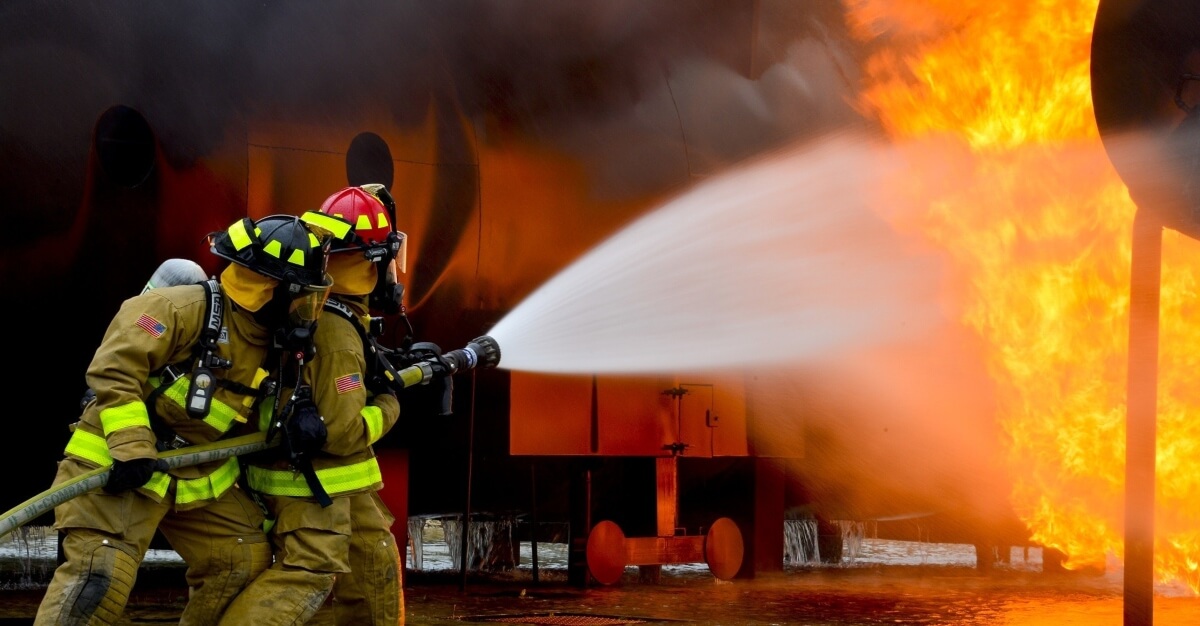
What is the environmental impact of fire water runoff and how to prevent a major incident?
Fires have devastating costs for property and human life but also have adverse consequences on the environment. One of the key threats to the environment is contamination from fire water runoff containing toxic products, and other environmental discharges or releases from burned materials.
Fire water runoff, its pathways through the environment, and its ecological impacts are complex and need to be assessed in detail, as detailed within our previous Blog
It contains chemicals that are toxic to soils, aquatic life in surface water, and drinking water sources which means it is vital to understand in more detail the surrounding land and environment. Is your business on a flood risk site, in a groundwater protection zone or near any environmentally protected sites and surface waters such as nature reserves, rivers and Sites of Special Scientific Interest? Understanding these risks will allow you to prioritise areas and act to prevent a major incident.
For example, the explosion and subsequent fire at the fuel storage depot at Buncefield in 2005 serves as a good example of why protecting the environment from firefighting activities is crucially important. In July 2010 five companies were fined a total of £9.5 million for their part in the Buncefield disaster. The Health and Safety Executive found that protective bunding had many flaws that caused large volumes of fuel, foam, and firewater to leave the site. It found that the site’s tertiary containment was not designed to cope with any large-scale releases.
Here are some methods you can employ to prevent the chances of pollution from fire water runoff at your business:
-
-
- Create a standalone Fire Prevention Plan which contains procedures for controlling fire water runoff in accordance with CIRIA (736) Containment systems for the prevention of pollution. It is also an essential requirement of Fire Prevention Plans which are required by the Environment Agency as a condition of an Environmental Permit.
- Consider how to manage contaminated firewater and water pollution prevention. Containment is the best solution to prevent firewater from escaping. Constructing containment lagoons, tanks, or storage systems on impermeable surfaces to hold firewater are good containment systems isolating firewater runoff and preventing it from entering surface drains, waterways, land, or sewers.
- Create a drainage plan so you do not allow fire water to enter drains. This can be avoided by using suitable spill kits or drainage covers to protect them. If this method is used, be sure to dispose of the waste correctly to prevent firewater from running into surface drains, polluting nearby waterways (rivers, streams, and groundwater), foul drainage systems, and land.
- Control firewater disposal. You must ensure any stored firewater is treated and/or correctly disposed of by a permitted or licensed waste management business.
-
These are some of the ways to prevent a major incident. Environmental protection is increasingly important, and we must do all we can to safeguard our natural resources and the existing natural eco systems around us. Enlisting the help of a trained flood and environment risk specialists can make the process much easier and ensure you are doing it correctly. Failure can have catastrophic personal and environmental repercussions and can also result in fines, business interruption and imprisonment should the worse happen.
Our team can help you by creating a Fire Water Management Plan which will identify ways to support water pollution prevention. Based upon our understanding of your site, we can provide you with realistic solutions to increase potential on-site containment where required and liaise with regulators when approval is required.
Our wealth of experience has led us to being able to offer a comprehensive service, which can be tailored for each individual site and client requirements.
Contact us for phase 1 environmental assessments or to enquire about fire water runoff containment.
Talk to us to find out more.
One of the key threats to the environment is contamination from fire water runoff



